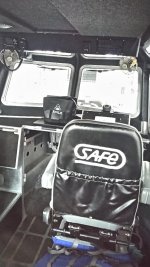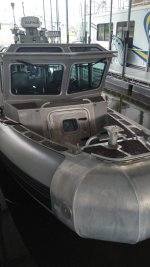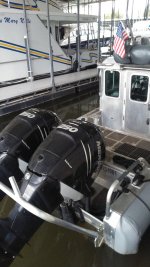As you have posted your personal appreciations with respect of my posts I'll ask : If you guys run large HP, short gap plates, bolt on motors with electric trim, boating with heavy boats heavy loaded while being driven with a wheel and remote box installation what the you know what are you doing in the portable, tall plate's gap, manual trim and steering motors powering light to medium light boats such as Sibs, Ribs, Flat boats, Boston Whaler section ?
Hey WN, as you have warned and implored the I'boats boating community not to listed to my BS posts, don't expect a kind answer from me in retribution. Let me tell you that you're no reference to listen to either, you have your own repetitive BS posting which will be useless listing and posting...

Only a complete moron will dare make an idiotic comparison between a large HP motor and a portable one, check the gap difference between both, there's nothing in common between both except a prop. That tells how much you know about portable motor behaviour in water with whom you've never worked before. With my disrespect, better concentrate on what you think you know and bug-off from my posts.
How does a geographical location and boating area accounts for top water performance whether the water flow at speed passes under the upper plate or over the AV plate. For the ones that doesn't know me, I'm located in Peru and as you probably know if have studied geography at school the Humbold Current runs north along more than 2.5 kilometers of coast. When off coast boating in flat calm no wind water cond the motor won't care at which lower leg is the water flow passing by at speed.

In moderate to heavy chop windy water conditions is where the severe prop aeration starts and you would't want your motor running with the AV plate set that low due to : will take very long to reach your final destination while not being able to increase the speed and probably screwing your motor revving as high as much as 7 K rpm constantly for long time periods.

On such windy choppy water conditions running the motor's upper plate to skim the water flow right under it will totally cancel the prop aeration, the prop will achieve its best thrust and if running a maximized prop the better.
Keep in mind that light boats as described running tall gap plates motors will have a jumpy ride under such water condition and excessive prop aeration issues. Would you say this is another BS of mine ?
Bottom line, let new boaters requesting best motor/transom match experience by themselves both mentioned plate's parameters according to their own geographical location and their boating area such as : a river, lagoon, lake open sea whichever they will be boating at and whichever plate setting suits them best....
Happy Boating





























